Great Zimbabwe Region
An aerial view of the "Great Enclosure" and "Valley" complexes, c. Janice Bell
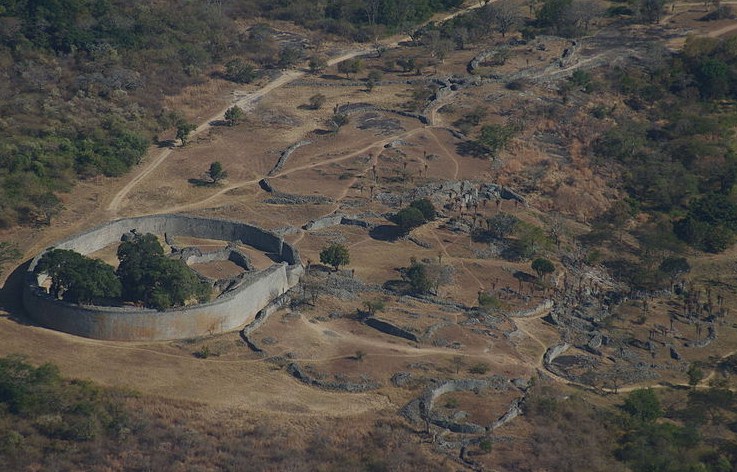 |
Many who are familiar with ancient African stone structures point only to Great Zimbabwe's "Great Enclosure," but modern-day
Zimbabwe is home to hundreds of
additional ancient and medieval stone ruins. The Great Enclosure is the largest and one of the most impressive, but hundreds of
mortarless stone structures dot a region extending hundreds
of miles long. The name, "Zimbabwe" is said to mean "Houses of Stone" in a
language spoken by the native Shona peoples. The Great Enclosure, along with the "Hill Complex" (or "Acropolis") and the "Valley Complex" all make up the medieval capital city of the Mwenemutapa (or Monomotapa) empire (350 - 1700s AD).
The conical tower of the "Great Enclosure", c. Hans Hillewaert
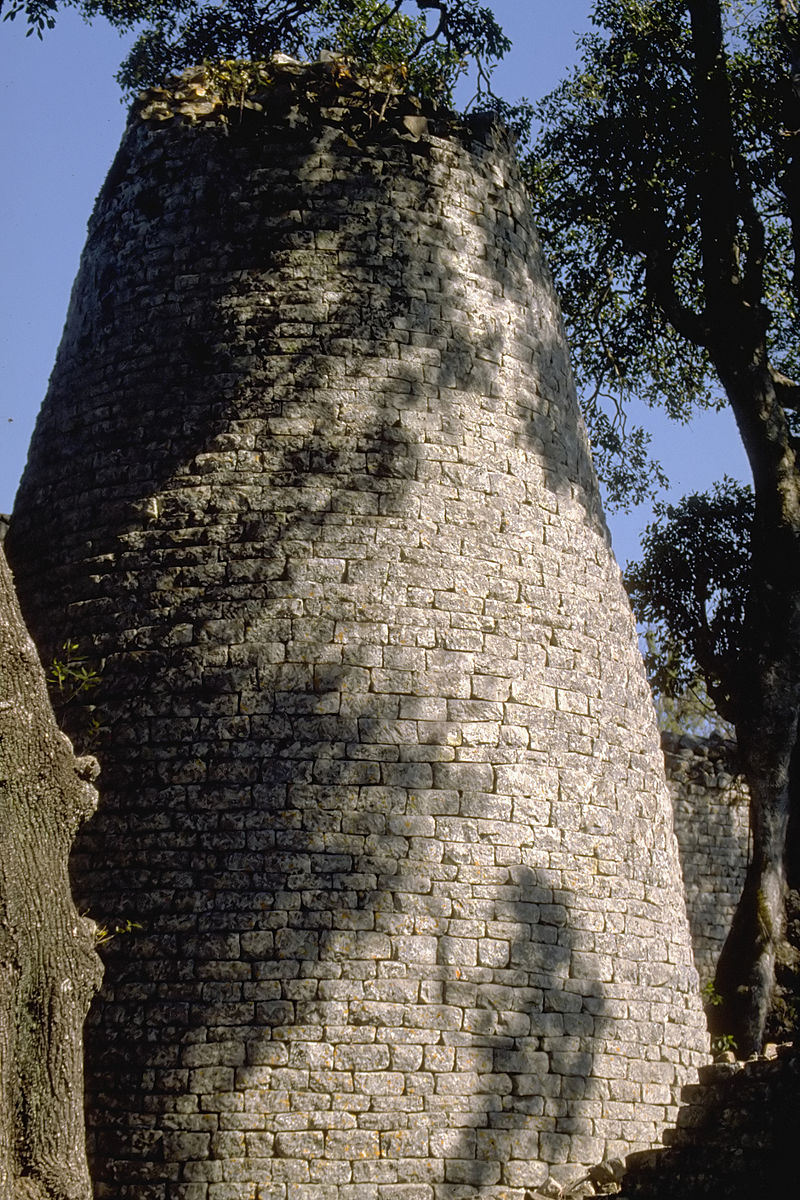 |
Built around 1100 AD and continuously inhabited through the 1400s, the Great Enclosure (or Imba Huru) is a castle known for its
circular outer wall measuring 820 feet in circumference, 36 feet in height (more than three stories high), and
20 feet thick. However,
there are other walls within the main enclosure, as well as numerous portals, corridors, stairwells and a well preserved and completely solid conical observation tower measuring 33 feet high and 16 feet
in diameter. Researchers, such as Richard Wade of the University of Pretoria, note that the Great Enclosure may have been built based on astronomical principles. For example, while standing on a platform at the eastern
end of the enclosure, one can see over the walls directly at the horizon, with a clear view of three monoliths that align with Saiph, Alnilam and Bellatrix
of the Orion constellation. From the eastern platform, one can also see that the tip of the conical tower aligns with the vernal equinox at
sunrise. In fact, Wade observed at least 35 astronomical alignments with monoliths as viewed from the same platform.
The outer wall of the "Great Enclosure," c. Jens Klinzing
 |
A closer look at the thickness of the walls of the "Great Enclosure"
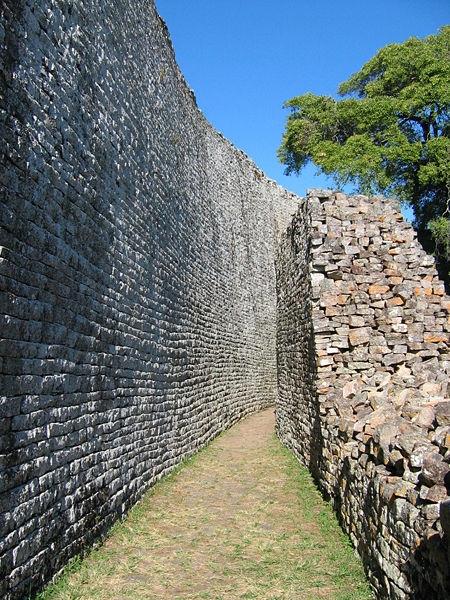 |
The "Hill Complex" (or "Acropolis"), is a stone fortress built along a 262-foot high hill overlooking the rest of the city. Built around 900 AD,
its walls measure 20 feet thick and rise as high as 36 feet (more than three stories high), and it features round towers, stairwells,
narrow corridors and several smaller well preserved buildings. The "Valley Complex" is the name for the rest of the stone enclosures of the city between the Hill Complex and Great Enclosure.
The round lookout towers of the Hill Complex, c. graph geo
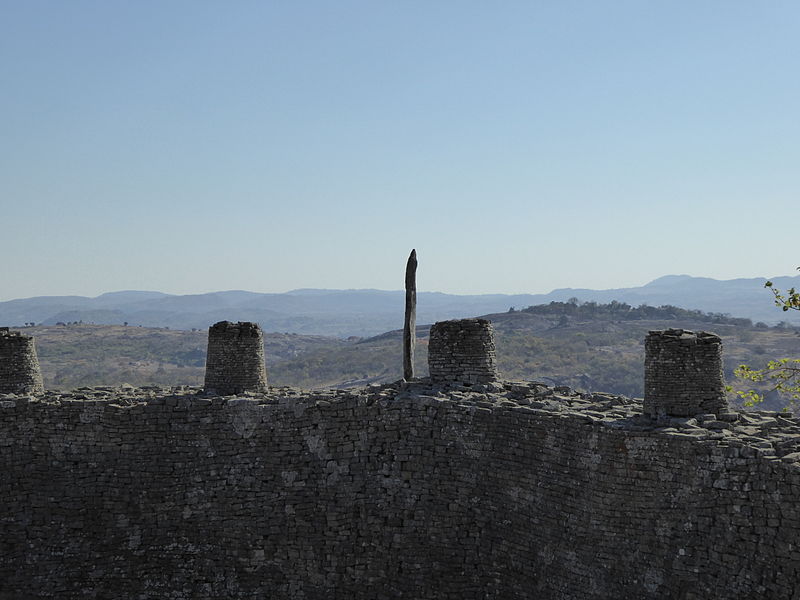 |
Hill Complex from below, c. Macvivo at en.wikipedia
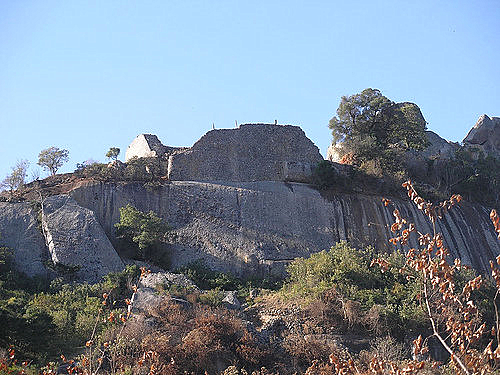 |
Archaeological discoveries dating from 350 AD, such as locally produced pottery sherds, ironware, soapstone statues and even a zodiac calendar attest to the region's sophisticated culture and advanced knowledge of astronomy.
According to UNESCO, artifacts from all over Southeast Africa and South Asia have been found in the Great Zimbabwe region, attesting to the existence of several wealthy, global trading empires.
Among the foreign artifacts are a coin minted in Kilwa (Swahili Coast), glass beads from Persia, and porcelain from China, showing Zimbabwe
was a part of vast global trading networks.
One of many sculptures found that has become a symbol of the ancient civilization, a hawk-like bird with arms and hands.
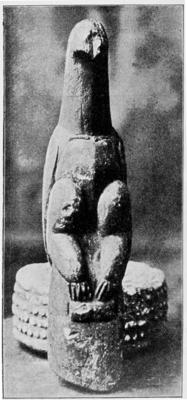 |
A zodiac calendar found at Great Zimbabwe
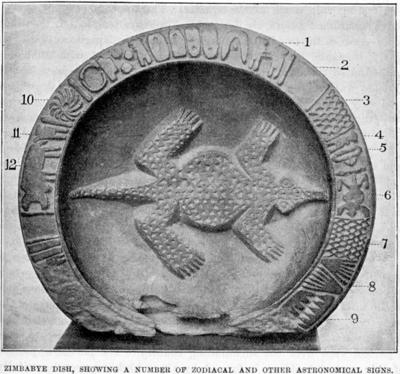 |
Khami
Khami is an ancient city in present-day Zimbabwe with impressive mortarless stone structures believed to have been developed in the 1400s AD.
Evidence of human habitation at this site, however, goes back 100,000 years, according to UNESCO.
While excavating the Khami ruins in 1910, archeologist, R.N. Hall documented his discovery of Chinese and
Persian pottery from 900-1100 AD. UNESCO claims German stone figures from the 1500s, Ming dynasty porcelain
(1500-1600s), and Spanish silverware from the 1600s have all been found at this site, suggesting it was once a
major center of trade.
Stairwell in Khami stone complex, c. Rhodesians Reunited
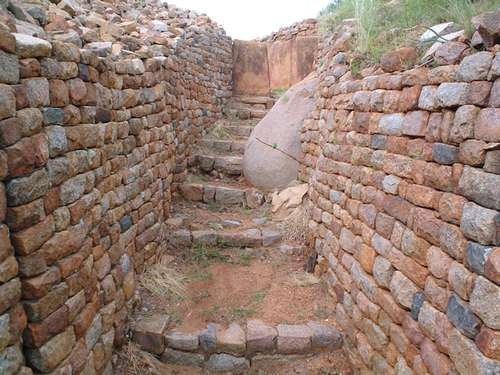 |
Mortarless step pyramid fortress at the Khami stone complex, courtesy of Rhodesians Reunited
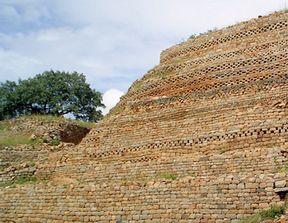 |
One of many stone enclosures at Ziwa, c. Damien Farrell
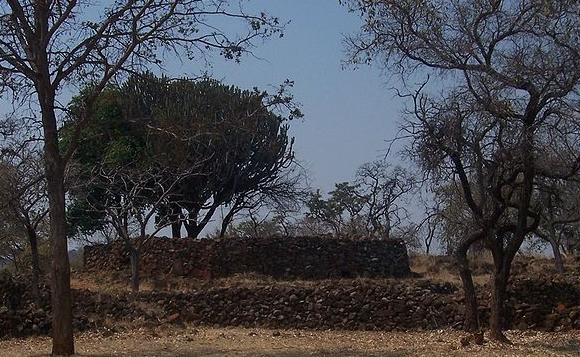 |
Ziwa
Ziwa is a series of at least 100 stone enclosures that once formed a prosperous city-state. Iron-smelting facilities, furnaces, ironware and ancient pottery have been found at various sites nearby date back to at least 300 AD. The region also
has dozens of pre-historic rock paintings.
Dhlo-Dhlo (Danamombe)
Very similar to the stone type and style of the Khami ruins, Dhlo Dhlo (or Danamombe) is a large complex dating to the 1600s AD. It was
most likely an extension of or new settlement of the peoples of Khami.
A mortarless stone castle at Naletale, c. Fanny Schertzer
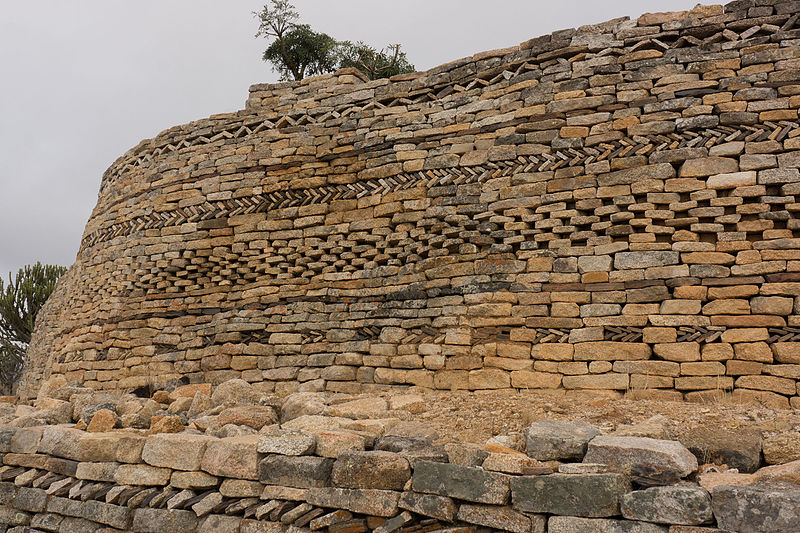 |
Naletale
Although somewhat smaller than other sites in Zimbabwe, Naletale is quite similar in architectural style to Kahmi and Dhlo Dhlo. Situated near Shangani, Matabeleland in Zimbabwe, the
Naletale ruins are likely remnats of edifices built under the Kalanga Torwa state (1600s AD).
Another view of the main stone fortress at Naletale, c. Fanny Schertzer
 |
Mutoko
Smaller and in a different style than many of the other ruins, Mutoko is perhaps Zimbabwe's
least known, yet most impressive structures.
Continue >>








